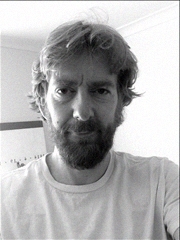Tutor HuntResources Painting Resources
Auerbach Exhibition Review
a personal view of the recent Tate Modern exhibition
Date : 16/01/2016
Author Information

Uploaded by : Jonathan
Uploaded on : 16/01/2016
Subject : Painting
Being with the Auerbachs in his largely self-selected Tate Britain exhibition is, as expected, initially a visceral experience.His oil paint is famously so sculptural that it is often, in his 1950’s and 1960’s paintings, actually in bas-relief. It is as powerful and inexorable as his peerless charcoal studies of that period (only one or two are included here) and these paintings share with drawing a ‘present tense’, timeless and brutal.So far so compelling – the imagery and sheer audacity of his work is so present even after 50 years. As I walk out of the first two galleries, I recognise that I am feeling the same sense of detachment from my surroundings as when leaving a particularly powerful and immersive film in the cinema.I am convinced that a white-haired woman in bright red trousers must be Julia, such a powerful presence in the show, and yet if it is her, it is like coming across the star of the film, without the lens of the award-winning cinematographer to invite me closer, and she is simply a.n.other gallery-goer, as we all are.Of course William Feaver and David Landau, not to mention Catherine Lampert, subject and curator of the exhibition, all seem to have volunteered to sit and be painted by this auteur of London life. They know that ‘the unexamined life is not worth living’ and those very many of us unexamined and unrecorded by Auerbach’s charcoal and brush are just sitting in the cinema.Socrates was on trial for his life when he pointed out that to be a complete human being, the scrutiny of others was necessary.Auerbach’s scrutiny is both professorial and personal. He says, modestly, yet explicitly in the accompanying extract of ‘The Last Art Film, that he is simply concerned with the technical aspects of painting and is, as he has previously said ‘just trying to make one good painting’.His Kindertransport journey to Kent, aged 8, and the subsequent death of his parents in a concentration camp during the war, must, evidently, have contributed to his incessant searching processes.If drawing is the probity of art, as Ingres had it, it is perhaps inevitable that after the first two galleries/decades, Auerbach, like Van Gogh and Cezanne (or ought that to be Bomberg and Kossoff?) draws as he paints, using a precise synthesis of his reiterative charcoal techniques scraping down his canvases at the end of a session.If drawing was just problem-solving the vital balance of forces that hold the picture plane apart, which is his avowed interest, these would be adept but detached paintings, but he allows the light in after twenty years of trowelling on the paint.In terms of oil painting, his later works are so gestural that they initially appear to be mere studies, compared to the depth of endeavour of his heroes, including Constable and Rembrandt, as he rejects the evidence of his epics. I think that this is precisely (not an obvious word to choose about his work, though his verbal and written language is certainly precise) his great achievement.In these slighter, lighter paintings, he is cinematographer no more, rather your companion in a place you already know well.
This resource was uploaded by: Jonathan
